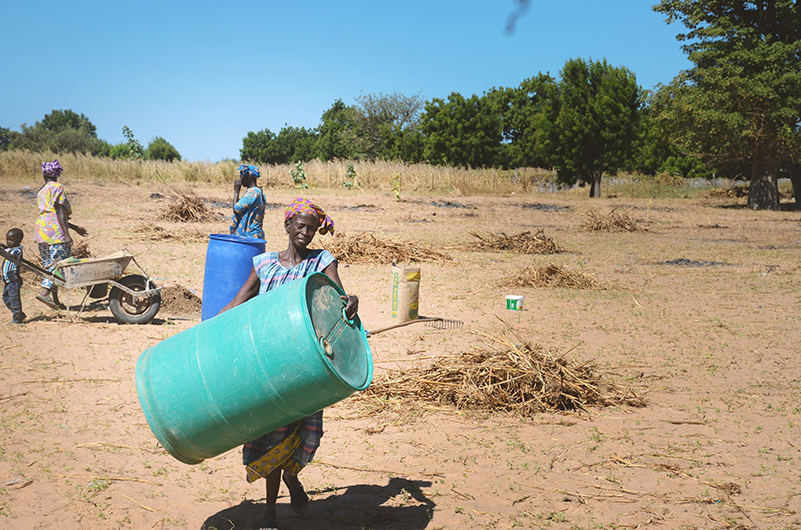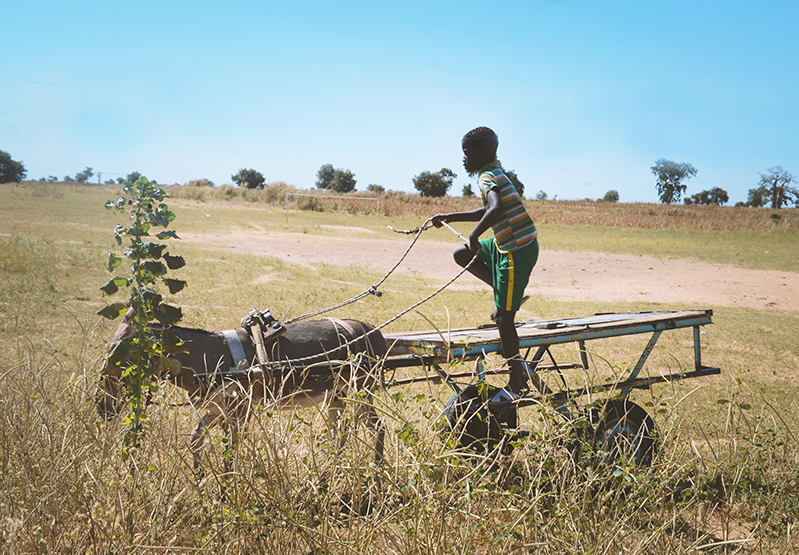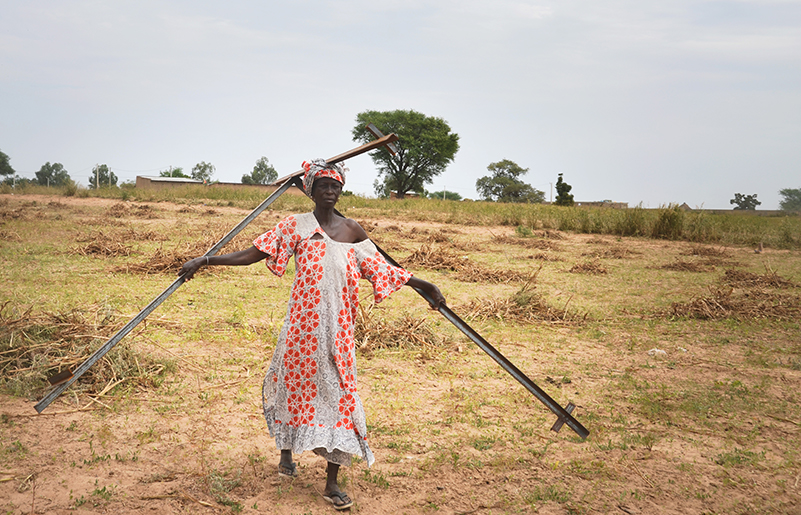Diabel and Yougouré are our most recent partner communities in 2018. They have just taken their first steps towards village self-sufficiency! Over the last couple of months, community members in Diabel and Yougouré have been working hard to prepare their village for upcoming sustainability projects. While CREATE!’s technicians rehabilitate their well and create above-ground water storage, community members work on measuring and clearing a space for their future garden site.

Community members in Diabel work on cleaning up the land where their future garden site will be.
The First Steps to Creating a Garden Site
Community members will first clean up an area of land they want to use for the community garden before they start their agricultural training with CREATE!’s technicians. The garden sites are approximately 1 hectare (about 2.5 acres) of land, and communities will fence in this area to protect their garden from animals.
Finding the Right Fence
However, unlike in the U.S., acquiring a chain-linked fence takes a few more steps in Senegal. Since chain-linked fences can’t be found in stores, they first need to buy the proper fencing wires. Next, these metal wires are taken to a professional “braider”. The braider and his team will spend the next few weeks twisting and bending all of the wires until the fence is created and ready for use.

Here we can see the custom-made fence posts hand-braided fencing wrapped up and ready to go in the village of Yougoure.
Live Fences: Even the Snakes Won’t Slither Through!
Nevertheless, the chain-linked fence only acts as a foundation for what will be the real garden site fence. After the fence is installed, community members will begin to plant acacia mellifera along the perimeter. This thorny shrub is known to grow quickly and will create an impenetrable wall within a year. The live-fence will provide windbreak and protect the garden from animals such as goats, cows, donkeys, and rodents. We have been told that even the snakes can’t slither through!

Acacia Mallifera (Photo by JMK)
The Environmental Benefits of Live Fences
Along with protecting the garden from outside pests, live-fences are also a sustainable alternative to chopping down trees for wood-fencing. Senegal already suffers greatly from desertification and deforestation which has been impacting rural villages. Because of this, it has become more common for communities to engage in sustainable projects such as tree-planting campaigns to relieve the environmental damage.
What’s Next?
Once water is free-flowing from the well again and the garden site has been fenced in, villages will have the means to turn the desert into a lush garden site. Community members will start their agricultural training with CREATE!’s technicians and put their new knowledge to work.
Members will learn practical watering methods, how to use cover crops, how to create organic fertilizer and compost, and many more sustainable agriculture methods. As a result, Diabel and Yougouré will be able to sustainably produce vegetables right from their village! We are excited to watch these two communities learn and grow into self-sufficient villages.
Consider donating to CREATE! today to support the efforts of more villages like Diabel and Yougouré.

Outside Sources:
Acacia Mallifera photo: https://commons.wikimedia.org/wiki/File:Acacia_mellifera,_loof_en_dorings,_Steenbokpan.jpg

